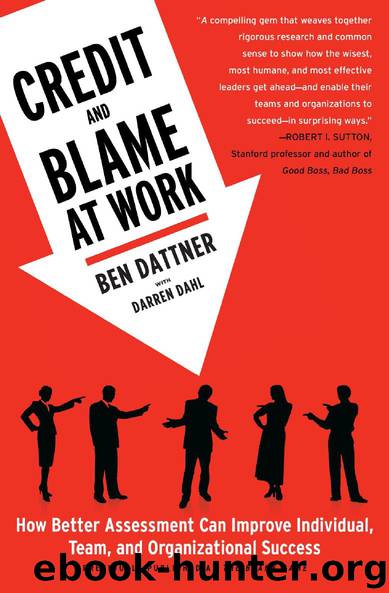Credit and Blame at Work by Ben Dattner

Author:Ben Dattner
Language: eng
Format: epub
Publisher: Free Press
RUMBLE IN MANHATTAN
Consider the case of the corporate merger between AOL and Time Warner, which not only remains the largest of its kind in American business history but has also gone down as one of the greatest business disasters of all time. Finalized on January 10, 2000, the deal, which was valued at $350 billion at the time, shocked the world. 12 Not just the size of the deal impressed, but so did the companies themselves: AOL, the upstart Internet service provider that was enabling some 27 million adults, children, and grandmothers alike (40 percent of everyone online at the time) to surf the web and check their email; and Time Warner, the esteemed giant of the media world’s old guard, were joining forces. The optimists saw it as a merger of equals, where Time Warner’s vast entertainment library—consisting of record labels, TV and movie studios, television networks, and book and magazine publishing divisions—would be paired with the New Economy’s preferred delivery service: the Internet. It was a dream match, at least in theory. Yet, ten years after the merger was announced, the companies split over irreconcilable differences—both seemingly worse off for the experience. As of January 10, 2010, the combined worth of the two companies was just one seventh of what it was the day the deal was announced, meaning that the combined company, ten years later, was 86 percent less valuable than the sum of its parts had been on merger day. In fact, by 2003 the holdings of the company’s biggest shareholder, Ted Turner, had gone down an astounding $8 billion (80 percent) and he had also left his job as vice chairman “in disgust.” 13
There is no shortage of business case studies that have asked and endeavored to explain what went wrong. Possible culprits or scapegoats include the two executives who shepherded the deal, Steve Case from AOL and Gerald Levin from Time Warner, as well as other feuding senior executives from the two legacy companies. Possible reasons include the failure to maximize the value of Time Warner’s content through AOL’s online channels, the bursting of the dot-com bubble, and even the evolution of the Internet itself, as AOL’s dial-up access quickly became outdated when high-speed options became more affordable and available much more rapidly than had been anticipated. Another explanation provided by many involved in the combined company is that the two corporate cultures were a mismatch from the beginning. It seemed that AOL employees were soon pitted against Time Warner staffers in an internal turf war. As an article in the New York Times put it: “Both sides seemed to hate each other.” Quotes from executives on either side, reflecting in hindsight on the logic behind the deal, seem to support this description. Richard D. Parsons, Time Warner’s president at the time of the merger, said: “I remember saying at a vital board meeting where we approved this, that life was going to be different going forward because they’re very different cultures, but I have to tell you, I underestimated how different.
Download
This site does not store any files on its server. We only index and link to content provided by other sites. Please contact the content providers to delete copyright contents if any and email us, we'll remove relevant links or contents immediately.
Tools of Titans by Timothy Ferriss(8222)
Change Your Questions, Change Your Life by Marilee Adams(7637)
Deep Work by Cal Newport(6885)
Playing to Win_ How Strategy Really Works by A.G. Lafley & Roger L. Martin(5931)
Man-made Catastrophes and Risk Information Concealment by Dmitry Chernov & Didier Sornette(5924)
Digital Minimalism by Cal Newport;(5667)
Big Magic: Creative Living Beyond Fear by Elizabeth Gilbert(5615)
The Slight Edge by Jeff Olson(5352)
Ego Is the Enemy by Ryan Holiday(5295)
The Motivation Myth by Jeff Haden(5157)
Stone's Rules by Roger Stone(5027)
The Laws of Human Nature by Robert Greene(5001)
Tuesdays with Morrie by Mitch Albom(4695)
Eat That Frog! by Brian Tracy(4436)
Rising Strong by Brene Brown(4380)
Skin in the Game by Nassim Nicholas Taleb(4165)
Bullshit Jobs by David Graeber(4100)
The Money Culture by Michael Lewis(4082)
Skin in the Game: Hidden Asymmetries in Daily Life by Nassim Nicholas Taleb(3935)
